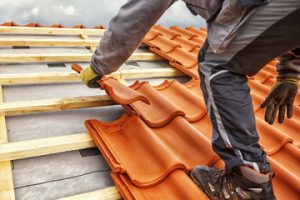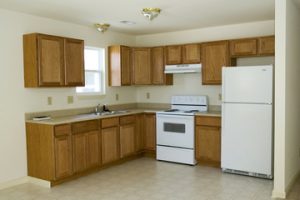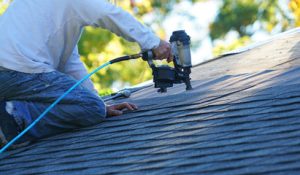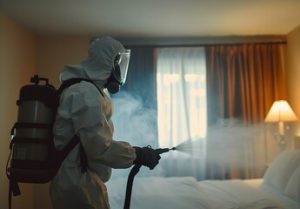Your air conditioning system is a crucial part of keeping your home cool. But like any machine, it sometimes needs a little TLC to keep up with extreme temperatures.
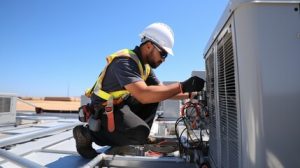
Yearly AC maintenance reduces the need for repairs, helps lower energy costs, and extends your air conditioner’s lifespan.
The thermostat is the brain of your AC system, telling the compressor when to start and stop a cooling cycle. It also monitors indoor temperatures to ensure your home reaches your preferred temperature. When something goes wrong with the thermostat, it can affect a wide range of AC issues. If you’re experiencing any of the following problems with your thermostat, it may be time for a professional diagnosis and repair.
No power
If your air conditioner turns on but doesn’t actually cool your home, the problem could lie with the selector switch. This small component connects to the thermostat via wires and is located in the control panel behind the cover. If the switch isn’t functioning, there’s usually a simple solution—remove the cover and check the switch for signs of burnt insulation or bare lead wires. If they’re present, replace the switch with a new one of the same type.
Constantly running
A malfunctioning thermostat can cause the compressor to constantly run even when you set the temperature to a comfortable level. This puts a heavy strain on your system and can cause it to break down over time. It can also result in higher energy bills. If you’ve noticed a spike in your energy costs without any changes to your cooling habits, contact an HVAC professional to investigate.
Frequent short cycling
If the air conditioner cycles on and off frequently without completing a full cooling cycle, it may be suffering from a faulty sensor. These sensors read the internal temperature and tell the compressor to shut off when the room is cool enough. Over time, these sensors can wear out and give false readings. A professional can replace the defective sensor and fix this issue.
Noisy AC
If you’re hearing grinding, banging, or screeching noises coming from your air conditioning unit, it’s time to call a pro. These sounds usually indicate a mechanical problem that needs to be fixed right away—often related to low refrigerant or an overloaded compressor.
Regular maintenance can help prevent these and other common AC problems. Scheduled service checks can catch issues before they become major problems, improve system efficiency, and reduce utility costs.
Blower Motor Issues
Your AC’s blower motor is responsible for drawing air into your system, cooling it and pushing it back out through your vents. This is an important job, especially during summer weather, but it can place a heavy burden on mechanical parts of your system. That’s why it’s a good idea to watch out for signs that your blower motor is starting to wear down.
If you notice that it takes longer than usual for your system to cool your home, your blower motor may be having trouble. This could be caused by a clogged air filter or dirt buildup on the fan blades. It’s also possible that the motor is overheating and consuming more energy than normal. This is a problem that’s best diagnosed by an experienced technician.
Another sign that your blower motor is going bad is if the airflow from your vents feels weak or uneven. This can indicate a clogged air filter, two-speed or variable-speed motor problems, or an issue with your ductwork.
Buzzing or humming sounds are other common problems that your blower motor might have. This can be caused by electrical issues, such as the motor drawing too much current or a faulty capacitor. You can prevent these problems from occurring in the first place by scheduling regular maintenance visits with a professional.
During these tune-ups, the technician will clean your blower fan cage and lubricate the motor bearings. This can improve airflow and keep your blower motor running efficiently. It can also help you save on your utility bills. The blower motor is a vital part of your cooling system, and it’s worth the extra effort to keep it working properly. This will help you avoid costly repairs and maintenance issues down the road. Contact an HVAC dealer to learn more about the benefits of regular maintenance and scheduled repairs. Their service technicians can keep your cooling system in tip-top shape and ensure your family stays comfortable all year round.
Clogged Drain Line
Air conditioner drain lines are a crucial part of the cooling process. They funnel water and moisture throughout the air conditioner to prevent overheating, but over time they can clog with dust and mold. These clogs not only stop the air conditioning from operating properly, but they can also be harmful to breathe.
If you notice a clogged drain line, first turn off your air conditioning unit. This will stop the flow of water and prevent electrical shock and damage to your air conditioning system. Then, locate the drain pipe. This is usually a PVC pipe located outside near the air conditioning unit, and it should have two ends. The end closest to the air conditioner should have a cap, which you can remove to access it. The other end of the drain line should connect to a drip pan, which you can find by looking for signs of leakage and standing water in the area around your AC unit.
The best way to prevent a clogged drain line is to have it cleaned regularly. A professional will use a wet/dry vacuum to clear the clog and remove any waste that is trapped in the drain line pipe. They will also check for the proper slope of the drain line, which determines how well water can flow and carry waste to the sewer system.
Another common cause of clogged drain lines is tree debris. The debris can collect in the air conditioner drain line if the line is too close to the roots of a nearby tree or shrub. The debris can also block the air venting system, leading to fungus and mildew in the home.
To avoid this problem, you should have your drain lines inspected and cleaned on a regular basis. A professional will be able to spot problems before they become a serious issue, and they can also help you develop an appropriate maintenance schedule for your drain lines. This will help to ensure that they stay free of clogs and other issues that can lead to an unexpected and inconvenient AC outage.
Humidity Issues
When your AC is working properly, it not only cools the air, but it dehumidifies and dries it as well. High humidity in the home can be uncomfortable, promote mold and mildew growth, cause musty odors, and damage house furnishings, walls, and decorations. When your AC isn’t addressing humidity effectively, it can lead to poor indoor air quality and higher energy bills.
When the AC isn’t removing moisture efficiently, it may have low refrigerant or dirty evaporator coils, which prevents them from properly condensing and draining away moisture. It can also be a sign of a problem with your ventilation system, such as negative pressure that forces humid air to escape the ducts and into your house. A professional inspection can help identify and solve these problems. In some cases, upgrading to a newer, more efficient system is the best long-term solution for humidity control. Other steps that can improve humidity control include regular maintenance, proper thermostat settings, and duct sealing. These all contribute to better indoor air quality and help lower energy bills.
